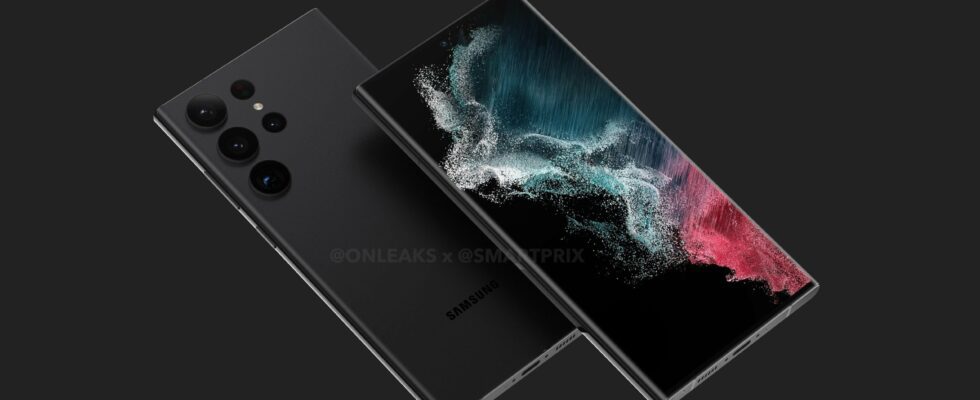Samsung has uploaded a video that appears to demonstrate the astrophotographic capabilities of its Galaxy S23 Ultra, which is scheduled to be presented on February 1.
While the Samsung Galaxy S23, Galaxy S23 Plus and Galaxy S23 Ultra won’t be officially presented until next week, during the Galaxy Unpacked event on February 1, Samsung is starting to teaser its three future high-end smartphones.
In a video posted this Sunday on its YouTube channel, the Korean manufacturer thus seems to be demonstrating the night photo capabilities, and with the long focal length of its optical zoom, of the Galaxy S23 Ultra.
https://www.youtube.com/watch?v=ia2eRkRqMXM
YouTube linkSubscribe to Frandroid
The video thus makes it possible to see what appears to be a video of the Moon rotating on itself. It is accompanied by a textmoon(which could be translated as “moon) where each “ohis represented by a different camera. If Samsung does specify that the image is “simulated for illustrative purposes», the message is however clear: with the new Galaxy S23 range, you should be able to easily photograph the Moon.
Shots particularly difficult to achieve
However, this type of shot is particularly difficult for smartphones, for several reasons. First, to take advantage of a close-up photo of the Moon, the camera must take advantage of a photo lens with a very long focal length, between 300 and 500 mm. However, on a classic smartphone with a x2 or x3 zoom, the focal length obtained is only 50 or 75 mm. It’s too small to have a close-up Moon on the photo.
The other concern posed by this type of shot is that of the dynamic range. You need a camera that is both capable of capturing the details of the surface of the star, and therefore a photo that is not too exposed and with sufficient definition.
It is precisely on these two elements that Samsung is expected for the Galaxy S23 Ultra. According to recent leaks, the smartphone would not only benefit from a 200-megapixel main photo sensor, capable of helping the long-focus camera for hybrid zoom thanks to its high definition, but also from a module equipped with a 10 megapixel sensor and above all a 230 mm equivalent telephoto lens. Enough to allow x10 optical zoom and x100 hybrid zoom, ideal for capturing images of the Moon.

Freehand photo of the Moon on the Galaxy S22 Ultra // Source: Omar Belkaab for Frandroid

Freehand photo of the Moon on the Galaxy S22 Ultra // Source: Omar Belkaab for Frandroid
Freehand photo of the Moon on the Galaxy S22 Ultra // Source: Omar Belkaab for Frandroid
Remember that the Galaxy S22 Ultra was already particularly efficient in this oh so difficult exercise, even if the photos were still slightly blurred. A concern that could be corrected with a better defined 200 megapixel sensor on the S23 Ultra.
Want to join a community of enthusiasts? Our Discord welcomes you, it’s a place of mutual aid and passion around tech.
